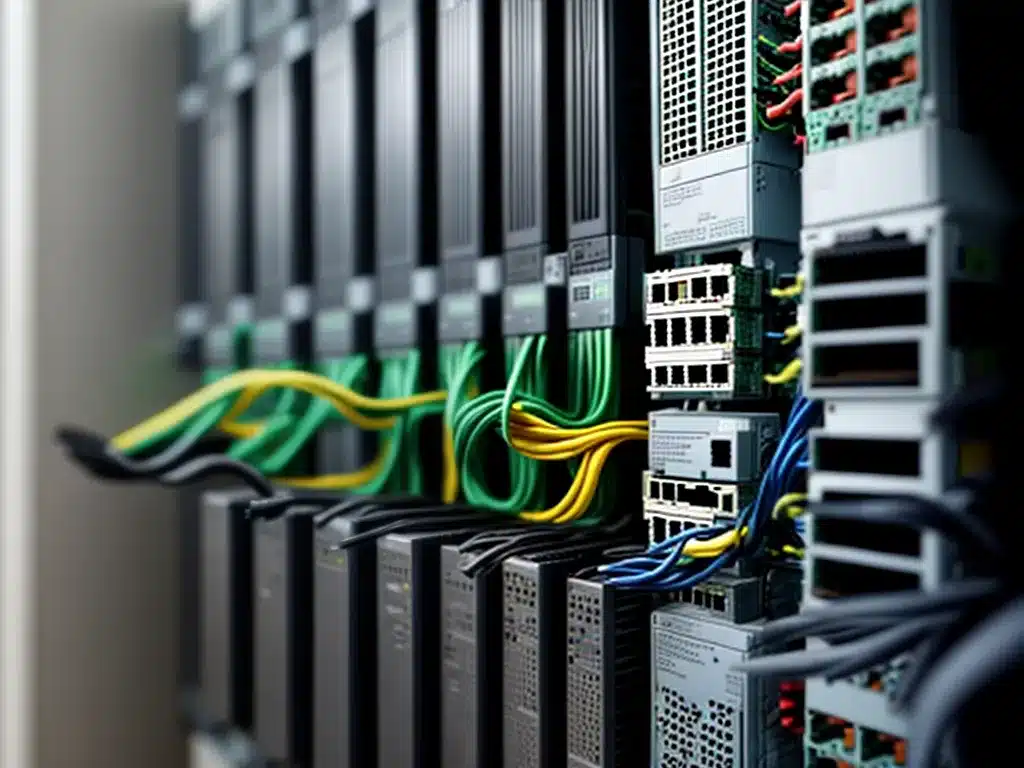
When it comes to building a reliable network infrastructure, choosing the right network switches is crucial. As an IT professional, I need to make informed decisions to ensure that the switches I deploy can handle the organization’s workloads efficiently. In this article, I will share everything you need to know about selecting network switches.
What are Network Switches?
Network switches are networking devices that connect multiple devices within a network by receiving and forwarding data packets to the intended destinations. They operate at layer 2 (data link layer) of the OSI model and use MAC addresses to forward frames between ports.
Some key things to know about switches:
-
Switches create dedicated connections between devices, providing full bandwidth.
-
They build the forwarding table based on MAC addresses to decide where to forward frames.
-
Switches filter and forward frames to only the intended destinations without broadcasting to all connected devices.
-
They help segment networks into virtual local area networks (VLANs) for better traffic management.
-
Switches support high port density, allowing many connections.
Why are Switches Important?
Here are some reasons why switches play an indispensable role in modern networks:
-
Speed: Switches provide high-speed dedicated connections between devices by switching frames in hardware. This allows devices to enjoy full bandwidth.
-
Performance: By minimizing broadcast traffic, switches reduce collisions and congestion which improves overall network performance.
-
Scalability: Switches make networks highly scalable by dividing broadcast domains and allowing more devices to be added without impacting performance.
-
Security: VLAN segmentation provided by switches helps control traffic flow and enhances network security.
-
Reliability: Switches offer redundancy features like spanning tree and trunking to prevent network loop issues and connectivity failures.
Key Considerations when Choosing a Switch
Selecting the right switch requires evaluating various technical specifications and features to meet the organization’s requirements. Here are some key factors to consider:
Port Speed and Types
-
Port speed – Choose switches that support port speeds that align with end devices (1Gbps, 10Gbps, 25Gbps, 40Gbps, 100Gbps). Higher speeds allow room to grow.
-
Port types – Pick switches with appropriate port types – copper RJ45 for short connections, SFP for fiber optics media, etc.
Throughput and Switching Capacity
- The data throughput of ports and the overall switching capacity should exceed the network traffic volumes you expect. This ensures good performance.
PoE Capability
- PoE (Power over Ethernet) allows powering of devices like VOIP phones, security cameras directly through Ethernet cables. Select switches with sufficient PoE budgets if required.
Port Density
- For large networks, switches with high port density (48-port, 96-port) are needed to provide required connectivity. Blade switches offer very high port density.
Layer 3 Capabilities
- Layer 3 switches can route between VLANs eliminating the need for separate routers. This simplifies management for large networks.
Management and Monitoring
- Look for switches with built-in tools or support for network management platforms like SNMP that allow easy monitoring and administration.
Reliability and Redundancy
- Enterprise-class switches offer reliability features like redundant power supply, fans etc. Look for redundancy protocols like Spanning Tree if high availability is critical.
Forwarding Rate and Switching Latency
- Forwarding rate and switching latency impact a switch’s ability to process network traffic without delays. Ensure these align with network demands.
Budget
- Finally, consider how features impact the budget. Prioritize must-have features over nice-to-have ones if working with limited budgets.
Comparing Key Switch Types
With a wide variety of switch types and models available, it helps to evaluate them based on your specific environment and usage scenarios. Here is a comparison of key switch types:
Unmanaged vs Managed Switches
||Unmanaged|Managed|
|-|-|-|
|Configuration|Plug-and-play, no configuration|Full control and configurability via CLI, SNMP, web etc|
|Features|Basic L2 forwarding|Advanced L2/L3 features like VLANs, trunking, routing etc|
|Monitoring|No monitoring capability|SNMP monitoring, logs and telemetry data|
|Cost|Inexpensive|More expensive for advanced features|
|Use cases|Basic networks, homes, SMBs|Enterprise networks, data centers|
Layer 2 and Layer 3 Switches
||Layer 2 Switches|Layer 3 Switches|
|-|-|-|
|OSI Layer|Operates at L2 (MAC addresses)|Can route between VLANs at L3 (IP addresses)|
|Inter-VLAN routing|Requires external router|Can route between VLANs internally|
|Complexity|Easy to manage|More complex config and management|
|Cost|Affordable|Higher cost for routing capabilities|
|Use cases|Basic switching needs|Large networks, routing between many VLANs|
Chassis vs Stackable vs Fixed Switches
||Chassis|Stackable|Fixed/Standalone|
|-|-|-|-|
|Architecture|Modular slots for switching cards|Stack multiple units logically|Single standalone unit|
|Redundancy|High redundancy of cards, power, fans|Some redundancy through stacking|Limited redundancy options|
|Scalability|Very high port scalability|Scalable by adding units|Fixed port density|
|Management|Centralized management|Single IP for stack|Per-device management|
|Cost|Most expensive|Medium cost|Least expensive|
|Use cases|High density data centers|Campus, enterprise networks|Small networks, branches|
Final Considerations for Switch Selection
Choosing the right switches that meet your technical needs and budget requires thoughtful evaluation of your network environment and applications. Here are a few closing tips:
-
Analyze your traffic patterns, network performance needs, and scalability requirements.
-
Check if the models under consideration have the right port types and densities.
-
Ensure forwarding rates, throughput, and latency meet demands.
-
Identify must-have and nice-to-have features based on needs and budget.
-
Validate availability of technical support and maintenance options.
-
Consider ease of management and integration with existing infrastructure.
-
Read product reviews and do POC testing if possible before final selection.
With careful planning and testing, you can select the ideal network switches tailored for your environment! Let me know if you have any other questions.












